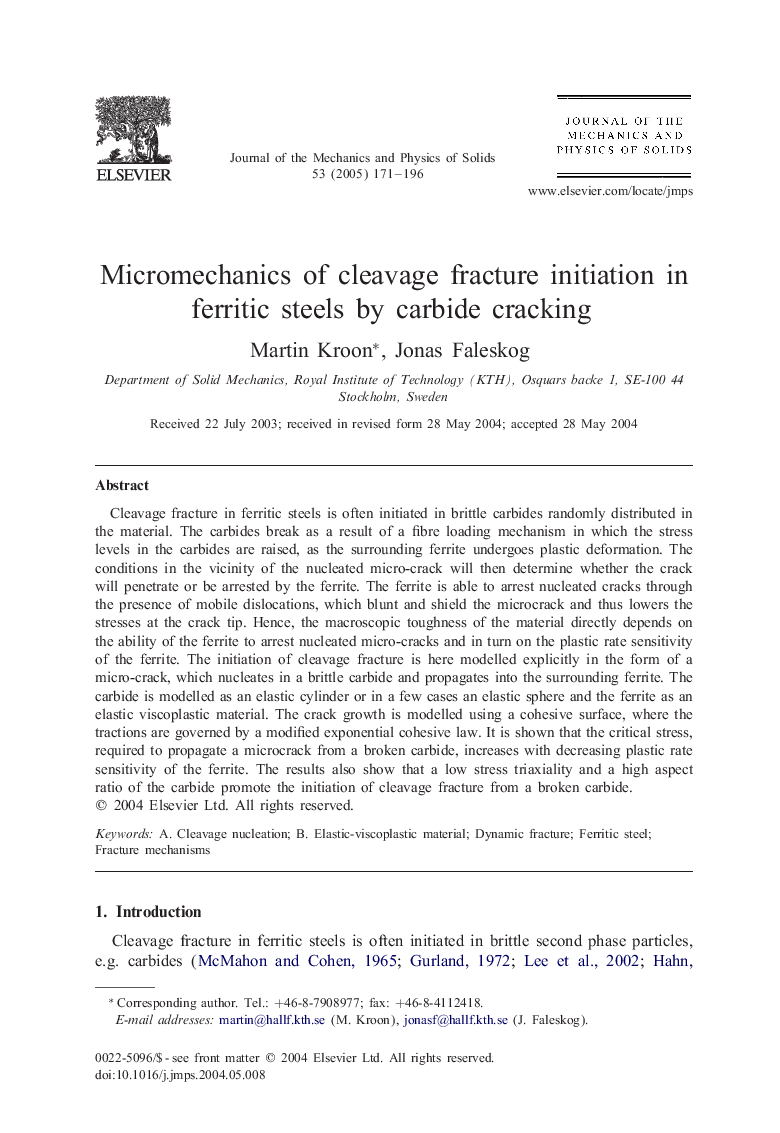| کد مقاله | کد نشریه | سال انتشار | مقاله انگلیسی | نسخه تمام متن |
|---|---|---|---|---|
| 9711241 | 1467189 | 2005 | 26 صفحه PDF | دانلود رایگان |
عنوان انگلیسی مقاله ISI
Micromechanics of cleavage fracture initiation in ferritic steels by carbide cracking
دانلود مقاله + سفارش ترجمه
دانلود مقاله ISI انگلیسی
رایگان برای ایرانیان
کلمات کلیدی
موضوعات مرتبط
مهندسی و علوم پایه
سایر رشته های مهندسی
مهندسی مکانیک
پیش نمایش صفحه اول مقاله

چکیده انگلیسی
Cleavage fracture in ferritic steels is often initiated in brittle carbides randomly distributed in the material. The carbides break as a result of a fibre loading mechanism in which the stress levels in the carbides are raised, as the surrounding ferrite undergoes plastic deformation. The conditions in the vicinity of the nucleated micro-crack will then determine whether the crack will penetrate or be arrested by the ferrite. The ferrite is able to arrest nucleated cracks through the presence of mobile dislocations, which blunt and shield the microcrack and thus lowers the stresses at the crack tip. Hence, the macroscopic toughness of the material directly depends on the ability of the ferrite to arrest nucleated micro-cracks and in turn on the plastic rate sensitivity of the ferrite. The initiation of cleavage fracture is here modelled explicitly in the form of a micro-crack, which nucleates in a brittle carbide and propagates into the surrounding ferrite. The carbide is modelled as an elastic cylinder or in a few cases an elastic sphere and the ferrite as an elastic viscoplastic material. The crack growth is modelled using a cohesive surface, where the tractions are governed by a modified exponential cohesive law. It is shown that the critical stress, required to propagate a microcrack from a broken carbide, increases with decreasing plastic rate sensitivity of the ferrite. The results also show that a low stress triaxiality and a high aspect ratio of the carbide promote the initiation of cleavage fracture from a broken carbide.
ناشر
Database: Elsevier - ScienceDirect (ساینس دایرکت)
Journal: Journal of the Mechanics and Physics of Solids - Volume 53, Issue 1, January 2005, Pages 171-196
Journal: Journal of the Mechanics and Physics of Solids - Volume 53, Issue 1, January 2005, Pages 171-196
نویسندگان
Martin Kroon, Jonas Faleskog,